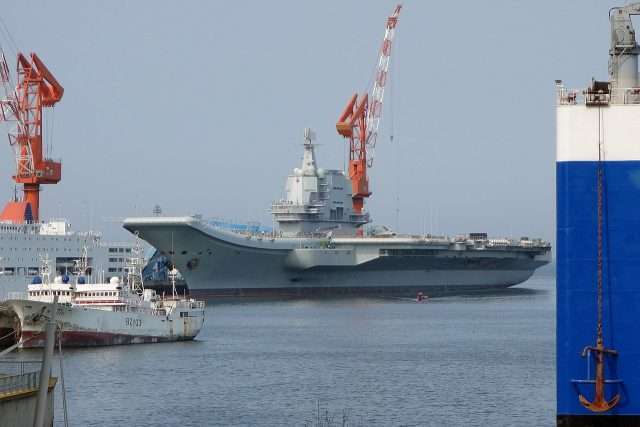
Author: Riccardo Rossi
China showed on national television its military hardware such as the two aircraft carriers Shandong and Liaoning, which might be deployed in the South China Sea to expand Beijing’s control and influence in the region.
On April 23rd, 2022, the People’s Republic of China (PRC) commemorated the 73rd anniversary of the founding of the People’s Liberation Army Navy (PLAN) by broadcasting on national television a six-minute video describing the operational capabilities of the two aircraft carriers Shandong and Liaoning, and alluding to the future launch of a new aircraft carrier class named Type 003.
Geopolitical scenario
President Xi Jinping broadcasting a short film on national television networks about the capabilities of the Liaoning and Shandong aircraft carriers, anticipated the future introduction of a third aircraft carrier called Type 003, which according to information released by the U.S. Department of Defence (DOD), is expected to enter service by 2024.
The Type 003, under advanced construction at the Jiangnan Shipyard, was equipped with the Catapult Assisted Take-Off But Arrested Recovery system (CATOBAR) (already present on the US Nimitz and Ford-class aircraft carriers), which allows the aircraft to reach a high speed during take-off.
President Xi Jinping’s decision to install catapults on Type 003 will enable the launch of future embarked jets by equipping them with more weapons and fuel than is possible with the two in-service Liaoning and Shandong aircraft carriers equipped with a Short Take-Off But Arrested Recovery (STOBAR) flight deck.
This STOBAR architecture of the flight deck of these two aircraft carriers, not having a catapult launch system for the jets, foresees that the take-off of the fighters takes place only with the thrust of the engines, exploiting a ski-jump located in the forward section of the two ships. This condition requires the aircraft to respect a correct thrust-weight balance, limiting the transportable war load.
With the entry into service in 2024 of the aircraft carrier Type 003, Beijing will have a ship that will allow it to increase the operativity of the embarked aircraft, being able to increase its military presence in some geo-maritime areas included in the East China Sea (ECS) and South China Sea (SCS), considered by the President Xi Jinping of high geopolitical value.
Regarding the East China Sea, the PRC focuses most of its interests on a relatively small area, including the island of Taiwan, its strait, and some surrounding territories such as the Senkaku Archipelago and the Miyako Channel.
Overall, President Xi considers this concentration of attention held by Beijing towards Taipei and the waters of the Senkaku Jinping the only way to exercise in the near future, its own sea control near the Formosa narrowing, pursuing a double aim:
- Allow the PRC to remove the threat posed by the United States to its cities along the coastline.
- Assert the possibility for Beijing to control the main access checkpoint of the Sea Lines of Communications (SLOC) that link maritime trade flows from the ECS with the SCS. (The Sino-U.S. military confrontation for control of the island of Taiwan).
Xi Jinping Presidency considered the South China Sea a geo-maritime area of great geopolitical importance, especially the Lozon and Malacca narrows because they are the region’s two largest entry and exit points. Therefore, the Chinese control of Lozon and Malacca narrows would allow Beijing to hold the main sea lines of communication crossing the South China Sea (Chinese militarisation of the South China Sea: a geostrategic necessity?)
Risk Assessment
On the one hand, Xi Jinping Presidency’s decision to expand its fleet of aircraft carriers increases its presence in geo-maritime spaces considered of high geostrategic interest. On the other hand, it increases geopolitical instability in the Asia-Pacific area, weighing on the diplomatic relations established by Beijing with some states in this region, especially Japan.
Over the past few years, the PRC has established close bilateral relations with the Rising Sun on economic matters and cultural exchange, aiming to build a constructive and stable relationship.
In the economic sphere, taking into consideration the Japanese Ministry of Foreign Affairs data for the fiscal year 2021, the Rising Sun has exported to China goods worth 206.2 billion dollars and simultaneously imported from the PRC products for 165.9 billion dollars. Regarding foreign direct financing (FID), in 2021, Japanese multinationals invested about $3.4 billion, while Beijing’s FID in Japan was $0.5 billion. Besides trade relations, the two countries share the presence of corresponding national communities in their respective territories. About 107,715 thousand Japanese live in China, while 745,441 thousand Chinese live in the Rising Sun. A somewhat relevant socio-economic interlacement affects the bilateral relations between the two countries.



